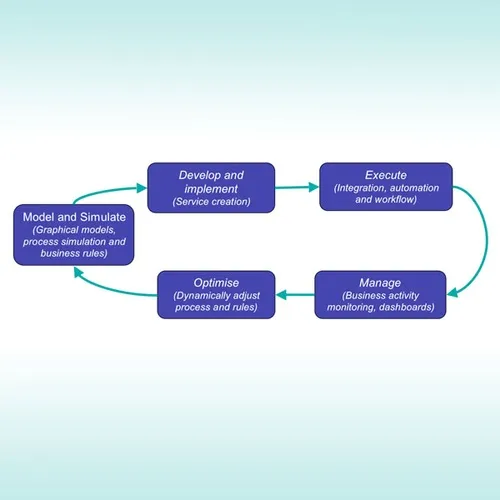Think Tank: Tips for a successful Business Process Management implementation
Blog: Colin Crofts - Business Process Improvement

It is a well-known fact that automation without process changes results in only marginal performance improvement. It is also true with process improvements without automation. When business and IT leaders collaborate and improve end-to-end business processes, the resulting benefits are many times higher than routine cost reduction initiatives. Hence, organisations are increasingly looking at Business Process Management as a tool to increase competitiveness, develop business agility, increase process efficiency and reduce cycle times. According to Gartner, investment in BPM suites is literally twice the growth rate of legacy packaged enterprise applications. Clearly BPM has gained traction.
There are a number of vendors, some offering a plethora of tools that are integrated into a BPM Suite, and others offering the necessary tools in a seamlessly unified environment. All of the vendors see service oriented architecture as a necessary pre-requisite for a successful BPM strategy. Most vendors advocate a more agile methodology of quick, iterative projects and support continuous improvement.
Why BPM?
Today’s businesses operate in a different world than the 80s and 90s when many business systems were developed. Legacy systems are often data-centric as well as product or function centric. They are not designed to be customer facing. They are also cumbersome to change. Business today demands constant change, and with ever shortening change cycles, customers and suppliers expect to interact via multiple channels and there is an increasing demand for self-service and strait-through processing. In this world, new, smarter systems are needed to accommodate rapid changes in the business processes spanning multiple legacy systems. These systems also need to be able to accept input from a variety of new sources (e.g. Web services, data-feeds, internet, forms, call centres and other applications etc).
To achieve this agility, organisations are beginning to adapt BPM approaches and tools. Focus is shifting from applications to managing and optimising business processes. In addition to the operational efficiency, businesses are looking for process agility, which is the ability to change operations, and the way it’s people and systems work, to adapt to change.
BPM uses process models to coordinate the interactions between people, systems, policies, and information. A process centric approach has clear advantages. Transactional applications have hard-wired process elements and business logic that are slow to change. Secondly business processes are rarely completed within a single application. A process layer allows processes to be clearly defined, measured and refined. It allows quick changes to process without significant code changes. It also facilitates further automation by filling gaps and linking together applications. This allows greater value to be extracted from existing investment in applications and people.
BPM tools
A BPM suite is an integrated collection of technologies that enable control and management of business processes. BPM technology has roots in process management capabilities of workflow but unlike workflow it is not document centric. Typically a BPM technology suite includes:
Process Modelling -- Typically with a visual design tool
Application integration -- Out of the box plug-ins or APIs to connect to other applications
Process Engine/execution -- Development and run-time environments to design and execute process activities
Process monitoring and analytics -- Process measurement, monitoring and data analysis capability
Business Rules management -- Rules databases to define business logic that governs and automates the processes
Collaboration portals -- Tools for design for customer self-service and business partner collaboration via the Web
Some vendors also provide pre-packaged frameworks to help organisations in specific industries get started more quickly.
BPM technologies have now advanced to provide a technology supported process improvement loop from modelling and simulation through to execution, monitoring and dynamic adjustment. Typically, tools cater for different user types and roles at each stage of the process (e.g. business analysts define process models while IT developers develop and integrate).
Gartner’s BPM magic quadrant contains software offerings with many different approaches to process improvement. Some are domain specific applications e.g. Siebel (CRM)/Guidewire (claims) with high level of domain specific processes. Others take the architectural approach using tools from IBM/Oracle/BEA or Tibco to integrate business processes together. Others are pure-play BPM suits from Lombardi, Savvion or Metastorm. Pegasystems’ offers BPM Suite together with one or more industry-specific solution frameworks.
Point solution applications can help quickly address critical domain specific needs but may not be extended to other areas. The architectural/integration path is popular with many as it builds on existing investment in these tools and is universal in application. Pure play solutions provide a well-integrated environment for BPM and may be easier to use. Understanding the goals of the BPM initiative and organisations maturity in using technology should facilitate the choice of tools.